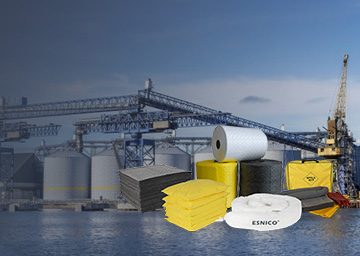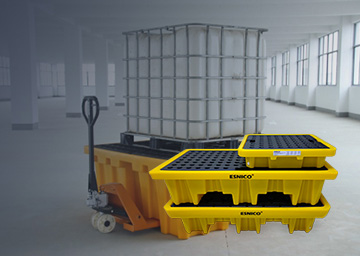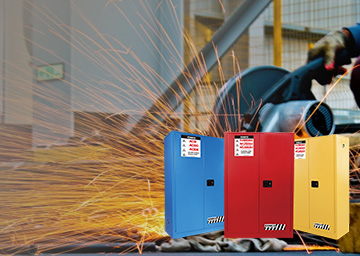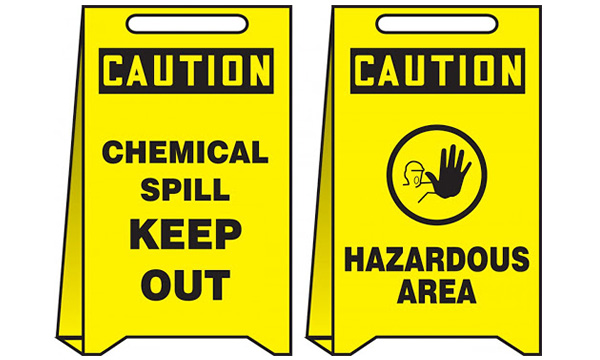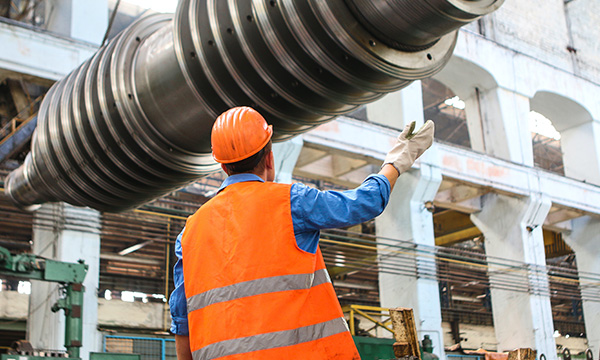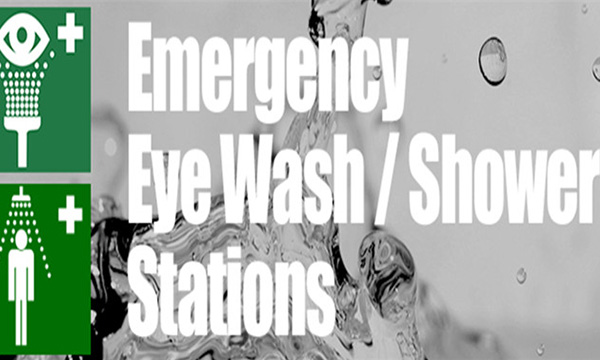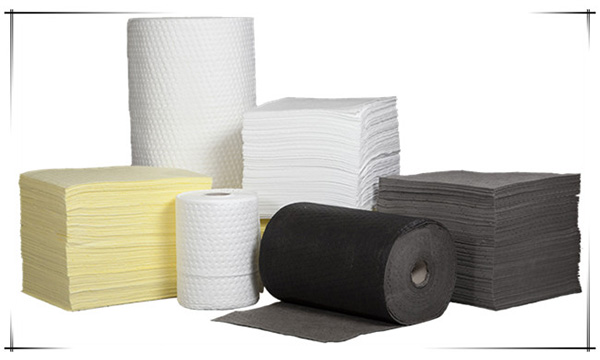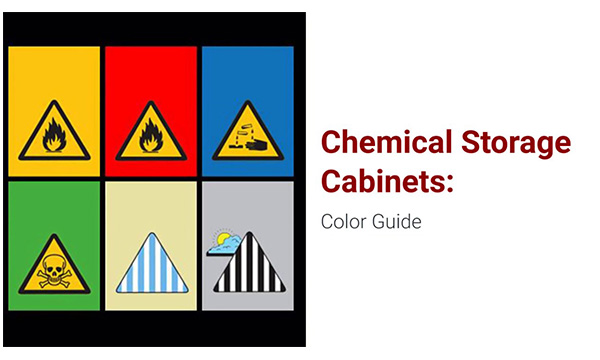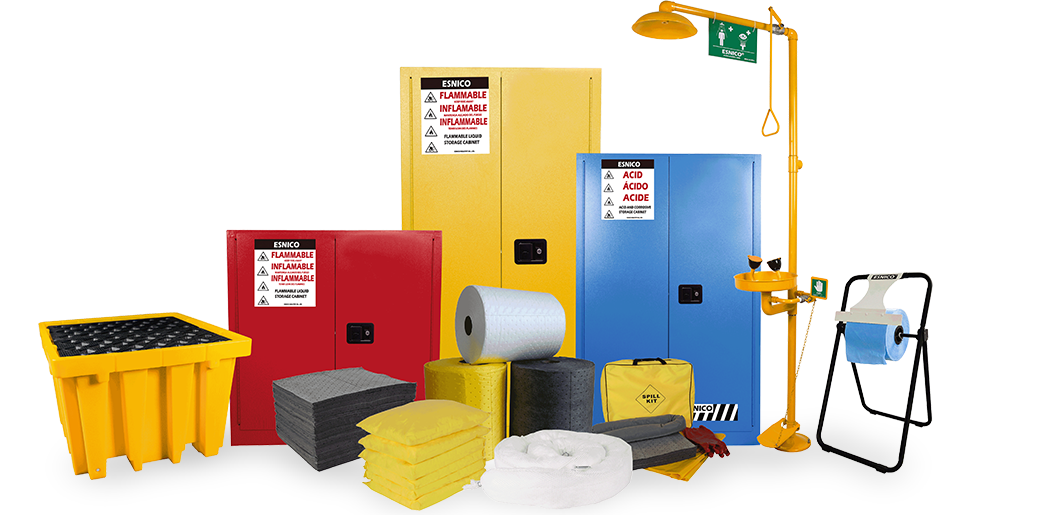Introduction
The Environmental Protection Agency (EPA) addresses containment and secondary containment systems in the Resource Conservation and Recovery Act (RCRA) found in Title 40 Code of Federal Regulations (CFR) Part 264.
The EPA refers to the need for containment and secondary containment in two different areas. Subpart I, Use and Management of Containers (40 CFR 264.175), which covers portable storage containers, such as 55-gallon drums, for hazardous waste, and the second in Subpart J, Tank Systems (40 CFR 264.193), which covers large stationary containers, such as tank systems, for hazardous waste.
Hazardous Materials and Hazardous Wastes
According to the Institute of Hazardous Materials Management, a hazardous material is any item or agent (biological, chemical, radiological, and/or physical), which has the potential to cause harm to humans, animals, or the environment, either by itself or through interaction with other factors.
Hazardous materials are defined and regulated in the United States primarily by laws and regulations administered by the EPA, Occupational Safety and Health Administration (OSHA), Department of Transportation (DOT), and Nuclear Regulatory Commission (NRC). Each has its own definition. OSHA defines a hazardous chemical as any chemical which is classified as a physical hazard or a health hazard, a simple asphyxiant, combustible dust, pyrophoric gas, or hazard not otherwise classified. EPA incorporates the OSHA definition and adds any item or chemical which can cause harm to people, plants, or animals when released by:
Spilling,
Leaking,
Pumping,
Pouring,
Emitting,
Emptying,
Discharging,
Injecting,
Escaping,
Leaching,
Dumping, or
Disposing into the environment.
EPA: Portable Containers
The EPA does not use the term “secondary containment” when addressing portable containers. Instead, they refer only to containment under 40 CFR 264.175(b). It says that a containment system must be designed and operated as follows:
A base must underlie the containers which are free of cracks or gaps and is sufficiently impervious to contain leaks, spills, and accumulated precipitation until the collected material is detected and removed.
The base must be sloped or the containment system must be otherwise designed and operated to drain and remove liquids resulting from leaks, spills, or precipitation, unless the containers are elevated or are otherwise protected from contact with accumulated liquids.
The containment system must have sufficient capacity to contain 10% of the volume of containers or the volume of the largest container, whichever is greater. Containers that do not contain free liquids need not be considered in this determination.
Run-on into the containment system must be prevented unless the collection system has sufficient excess capacity to contain any run-on which might enter the system. Excess capacity must be in addition to the 10% of the volume of containers or the volume of the largest container, whichever is greater.
Spilled or leaked waste and accumulated precipitation must be removed from the sump or collection area in as timely a manner as is necessary to prevent overflow of the collection system.
Under 40 CFR 264.175(c), the EPA also addresses storage areas that store containers holding only wastes that do not contain free liquids and sets the following provisions for the storage areas:
The storage area must be sloped or otherwise designed and operated to drain and remove liquid resulting from precipitation, or
The containers must be elevated or otherwise protected from contact with accumulated liquid.
There are certain wastes for which a storage area alone will not suffice. These waste streams are listed under 40 CFR 264.175(d) and require a containment system in addition to the storage area.
EPA: Tank Systems
The EPA specifies under 40 CFR 264.193(b) that secondary containment systems are required to prevent any migration of wastes or accumulated liquid out of the system to the soil, groundwater, or surface water during the use of the tank system. Minimum requirements of how the system must be constructed are listed in 40 CFR 264.193(c) and include:
Constructed of or lined with materials that are compatible with the wastes to be placed in the tank system and must have sufficient strength and thickness to prevent failure owing to pressure gradients (including static head and external hydrological forces), physical contact with the waste to which it is exposed, climatic conditions and the stress of daily operation (including stresses from nearby vehicular traffic).
Placed on a foundation or base capable of providing support to the secondary containment system, resistance to pressure gradients above and below the system, and capable of preventing failure due to settlement, compression, or uplift.
Provided with a leak-detection system that is designed and operated so that it will detect the failure of either the primary or secondary containment structure or the presence of any release of hazardous waste or accumulated liquid in the secondary containment system within 24 hours, or at the earliest practicable time if the owner or operator can demonstrate that existing detection technologies or site conditions will not allow detection of a release within 24 hours.
Sloped or otherwise designed or operated to drain and remove liquids resulting from leaks, spills, or precipitation. Spilled or leaked waste and accumulated precipitation must be removed from the secondary containment system within 24 hours, or in as timely a manner as possible to prevent harm to human health and the environment if the owner or operator can demonstrate that removal of the released waste or accumulated precipitation cannot be accomplished within 24 hours.
Along with the above requirements, a provision has been made that requires that one or more of the following devices also be implemented:
A liner (external to the tank)
A vault
A double-walled tank; or
An equivalent approved device
These four devices need to meet the stringent specifications spelled out in 40 CFR 264.193(e). For example, an external liner must be:Designed or operated to contain 100% of the capacity of the largest tank within its boundary;Designed or operated to prevent run-on or infiltration of precipitation into the secondary containment system unless the collection system has sufficient excess capacity to contain run-on or infiltration. Such additional capacity must be sufficient to contain precipitation from a 25-year, 24-hour rainfall event.
Free of cracks or gaps; and Designed and installed to surround the tank completely and to cover all surroundings likely to come into contact with the waste if the waste is released from the tank(s) (i.e., capable of preventing lateral as well as vertical migration of the waste).


